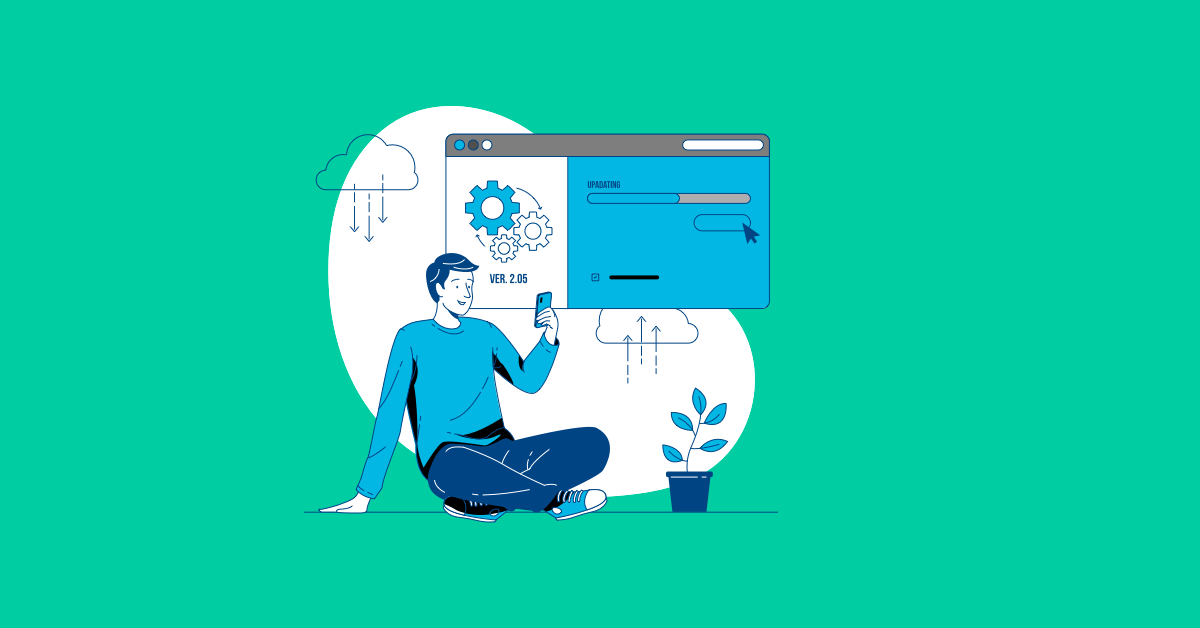India's tech revolution fuels the rise of the managed services industry

Companies, eager to leverage cloud computing, AI, and improved solutions, are
seeking reliable partners to manage the complexity. With a massive talent pool
of STEM graduates, dynamic IT infrastructure, and supportive policies, the world
is looking towards India to serve as a primary player in this space. India's
arduous journey to becoming a global tech giant is the result of decades of
investment of time, money, and energy into meticulously planning and taking
continuous strides. Companies from around the world are shifting significant
parts of their IT and business spend to India to drive cost optimisation. ...
The pandemic acted as a catalyst for a revolution in managed IT services.
Agility, resilience, and enhanced cybersecurity became critical overnight and
the rise in remote work led to a surge in demand for managed services.
Cybersecurity concerns also skyrocketed both during and after the pandemic and
innovation in data handling was imperative. Consequently, many companies are
pivoting towards managed service providers to strengthen their computing power,
data analysis, and cybersecurity measures.
5 Innovatinve Cybersecurity Measures App Developers Should Incorporate in the Digital Transformation Race
The impending era of quantum computing will give the expected boost to digital
transformation; however, this technological innovation to classic computing
poses a significant challenge to traditional encryption methods due to its
exceptional computing power that hackers can leverage to launch unprecedented
brute force attacks that can decrypt passwords and crack encryptions in
seconds or minutes. App developers must integrate post-quantum cryptographic
features to withstand the computational power of quantum computers. ... By
incorporating ZTNA and multifactor authentication (MFA), app developers can
proactively prevent data breaches by thoroughly verifying the trustworthiness
of any user or device trying to access the organization's networks. The
multifactor authentication feature adds a layer of security to VPN access by
requiring multiple verification forms; users’ verification methods can include
passwords, unique OTP codes sent to mobile devices, or biometric
authentication, such as fingerprint, eye scan, voice recognition, hand
geometry, or facial recognition, before granting network access.
How to Use Self-Healing Code to Reduce Technical Debt

The idea of self-healing code with LLMs is exciting, but balancing automation
and human oversight is still crucial. Manual reviews are necessary to ensure
AI solutions are accurate and meet project goals, with self-healing code
drastically reducing manual efforts. Good data housekeeping is vital, and so
is ensuring that teams are familiar with best practices to ensure optimal data
management for feeding AI technology, including LLMs and other algorithms.
This is particularly important for cross-department data sharing, with best
practices including conducting assessments, consolidations, and data
governance and integration plans to improve projects. None of this could take
place without enabling continuous learning across your staff. To encourage
teams to use these opportunities, leaders should carve out dedicated time for
training workshops that offer direct access to the latest tools. These
training sessions could be oriented around certifications like those from
Amazon Web Services (AWS), which can significantly incentivize employees to
enhance their skills. By doing this, a more efficient and innovative software
development environment can be achieved.
Chaos Management in Software: A Guide on How to Conduct it

When too much development occurs too soon, this is one symptom that chaos may
be present in an organization. Growth is usually beneficial, but not when it
causes chaos and confusion. Companies also exhibit indications of disorder
when they overstretch their operational capacity or resources, such as money
or people, creating an unstable atmosphere for both employees and consumers.
... In the work environment, we can see how it can negatively and positively
affect our output. It is essential to be in a healthy work environment that
offers employees the opportunity to succeed and be rewarded for their
achievements. The problem with chaos is that it can cause an unhealthy work
environment, negatively affecting the worker’s productivity, quality of work,
and physical health. Chaos in the workplace also impacts team building because
when people are in a chaotic space, they cannot focus on anything other than
how they feel at that moment. We have all been there – that one time when we
did not get enough sleep, or the project was due tomorrow morning, or we
needed to wake up early to get that presentation done before your meeting
started.
CIOs must reassess cloud concentration risk post-Crowdstrike

Cloud concentration risk is now arising when these enterprises rely
worryingly on a single cloud service provider (CSP) for all their critical
business needs. In effect this has shifted reliance on their own data center
to now storing all data, running all applications on a single cloud
infrastructure. Cloud concentration risk is then fully realized when any one
incident, like the CrowdStrike outage, can disrupt your entire operation. With
enterprises increasingly dependent on the same applications and cloud
providers, this can be devastating at scale, as we’ve seen with CrowdStrike.
Such a scenario extends to security breaches and other events that can have
more systemic impact on countries and industries. ... Toavoid the dangers of
cloud concentration risk, a multi-cloud strategy,in which business workloads
are spread across multiple cloud providers, is vital. With a multi-cloud
strategy in place, when one provider has an issue, your operations in the
other clouds can keep things running. The alternate is to adopt a hybrid
cloudapproach,combiningprivate and public cloud. This gives you more control
over proprietary and sensitive data whilst still having all the benefits of
public cloud scalability.
With ‘Digital Twins,’ The Doctor Will See You Now
Doctors who use the system can not only measure the usual stuff, like pulse
and blood pressure, but also spy on the blood’s behavior inside the vessel.
This lets them observe swirls in the bloodstream called vortices and the
stresses felt by vessel walls — both of which are linked to heart disease. ...
We drew a lot from the way they were already optimizing graphics for these
computers: The 3D mesh file that we create of the arteries is really similar
to what they make for animated characters. The way you move a character’s arm
and deform that mesh is the same way you would put in a virtual stent. And the
predictions are not just a single number that you want to get back. There’s a
quantity called “wall shear stress,” which is just a frictional force on the
wall. We’ve shown that when doctors can visualize that wall shear stress at
different parts of the artery, they may actually change the length of the
stent that they choose. It really informs their decisions. We’ve also shown
that, in borderline cases, vorticity is associated with long-term adverse
effects. So doctors can see where there’s high vorticity. It could help
doctors decide what type of intervention is needed, like a stent or a drug.
What Are the Five Pillars of Data Resilience?

The first is the most basic one: Do you have data backed up in the right way?
That seems very straightforward, but you’d be shocked by how many companies
don’t have the right backup strategy in place. And that’s vital because our
research tells us that 93% of ransomware attackers go for the backups first.
... So, the second pillar is, can you recover quickly from a breach? What’s
your recovery strategy, and can you get to your recovery time objective and
recovery point objective? Third is data freedom, which is not often talked
about. There are many instances where you’ll just need to change your tech
stack. You may see a better tech solution, or companies may just change their
posture. No matter what choice you make, you need your data to travel with you
with minimal fuss. ecurity is fourth. Do you have the right malware
protection? Are you able to detect changing patterns, even of your own
employees to mitigate insider threats? And there’s obviously table stakes,
like multifactor authentication, end-to-end security, etc. And then the last
pillar we look at is data intelligence.
Navigating the Future with Cloud-Ready, Customer-Centric Innovations
One of CFOS’s most transformative aspects is its cloud-based infrastructure.
SCC realised that the traditional on-premises servers were becoming a
bottleneck, limiting scalability and flexibility. By moving to the cloud, SCC
gained the ability to dynamically scale resources according to demand,
reducing upfront costs and minimising maintenance challenges. This shift
optimised resource utilisation and provided a more agile platform for future
growth and technological advancements. “Transitioning from on-premises servers
to a cloud solution significantly enhanced SCC’s operational strategy,” Lee
revealed. “Previously, managing and scaling physical servers posed challenges,
particularly in cost and availability of relevant skill-sets, solutions and
resources.” The cloud integration resolved these challenges by enabling SCC to
scale resources as needed. This approach enhanced cost efficiency and allowed
the organisation to quickly adapt to changing demands. By transitioning to the
cloud, SCC was able to manage resources dynamically, accommodating peak loads
and supporting future growth without the limitations of physical
infrastructure.
The Ultimate Roadmap to Modernizing Legacy Applications

First, organizations should conduct an assessment of their application
portfolios to determine which apps are eligible for modernization, whether
that be containerization, cloud migration, refactoring or another route. This
can help government IT leaders prioritize which apps to upgrade. It also gives
teams a comprehensive picture of the entire application portfolio:
performance, health, average age, security gaps, container construction and
more. “Having an inventory of all of your applications can help you avoid
duplicative investments and paint a clearer picture of how that application
fits into your organization’s long-term strategy,” says Greg Peters, founder
of strategic application modernization assessment (SAMA) at CDW. ... The next
critical step is to map dependencies before beginning the actual
modernization. “Even a minor change to the functionality of a core system can
have major downstream effects, and failing to account for any dependencies on
legacy apps slated for modernization can lead to system outages and business
interruptions,” Hitachi Solutions notes.
Fully Homomorphic Encryption (FHE) with silicon photonics – the future of secure computing

FHE requires specialist hardware and considerable amounts of processing power,
leading to high energy consumption and increased costs. However, FHE enabled
by silicon photonics — using light to transmit data — offers a solution that
could make FHE more scalable and efficient. Current electronic hardware
solutions systems are reaching their limits, struggling to handle the large
volumes of data and meet the demands of FHE. However, silicon photonics can
significantly enhance data processing speed and efficiency, reduce energy
consumption and lead to large-scale implementation of FHE. This can unlock
numerous possibilities for data privacy across various sectors, including
healthcare, finance and government, in areas such as AI, data collaboration
and blockchain. This could potentially lead to significant progress in medical
research, fraud detection and enable large scale collaboration across
industries and geographies. ... FHE is set to transform the future of secure
computing and data security. By enabling computations on encrypted data, FHE
offers new levels of protection for sensitive information, addressing critical
challenges in privacy, cloud security, regulatory compliance, and data
sharing.
Quote for the day:
“The road to success and the road to
failure are almost exactly the same.” -- Colin R. Davis
No comments:
Post a Comment